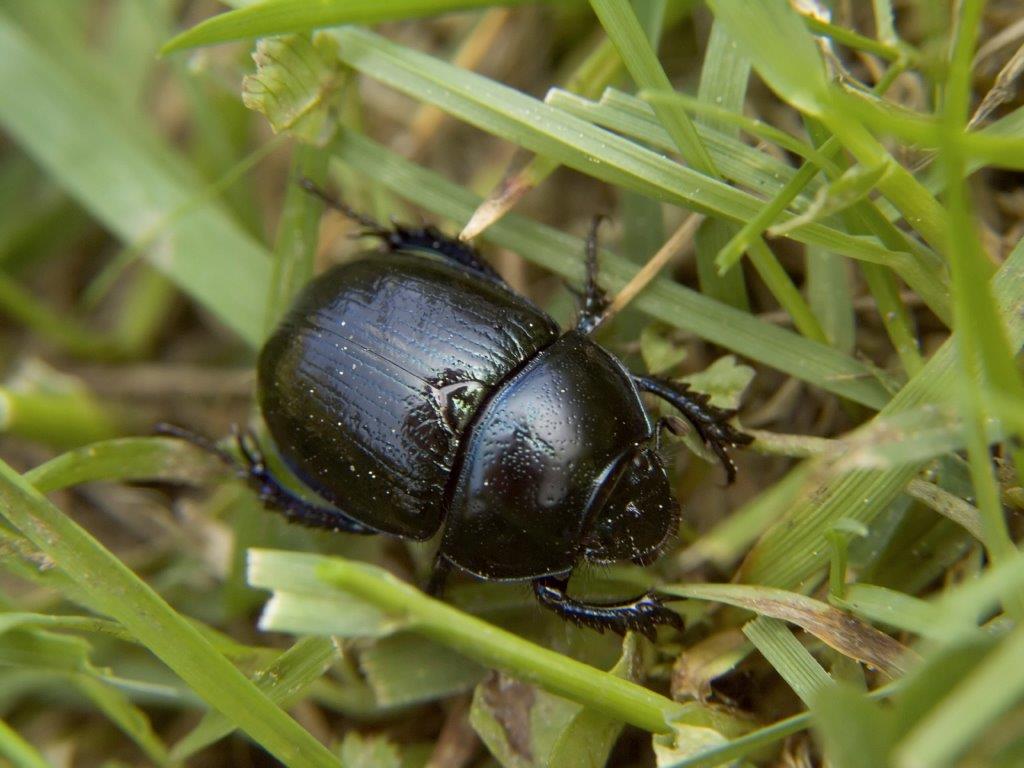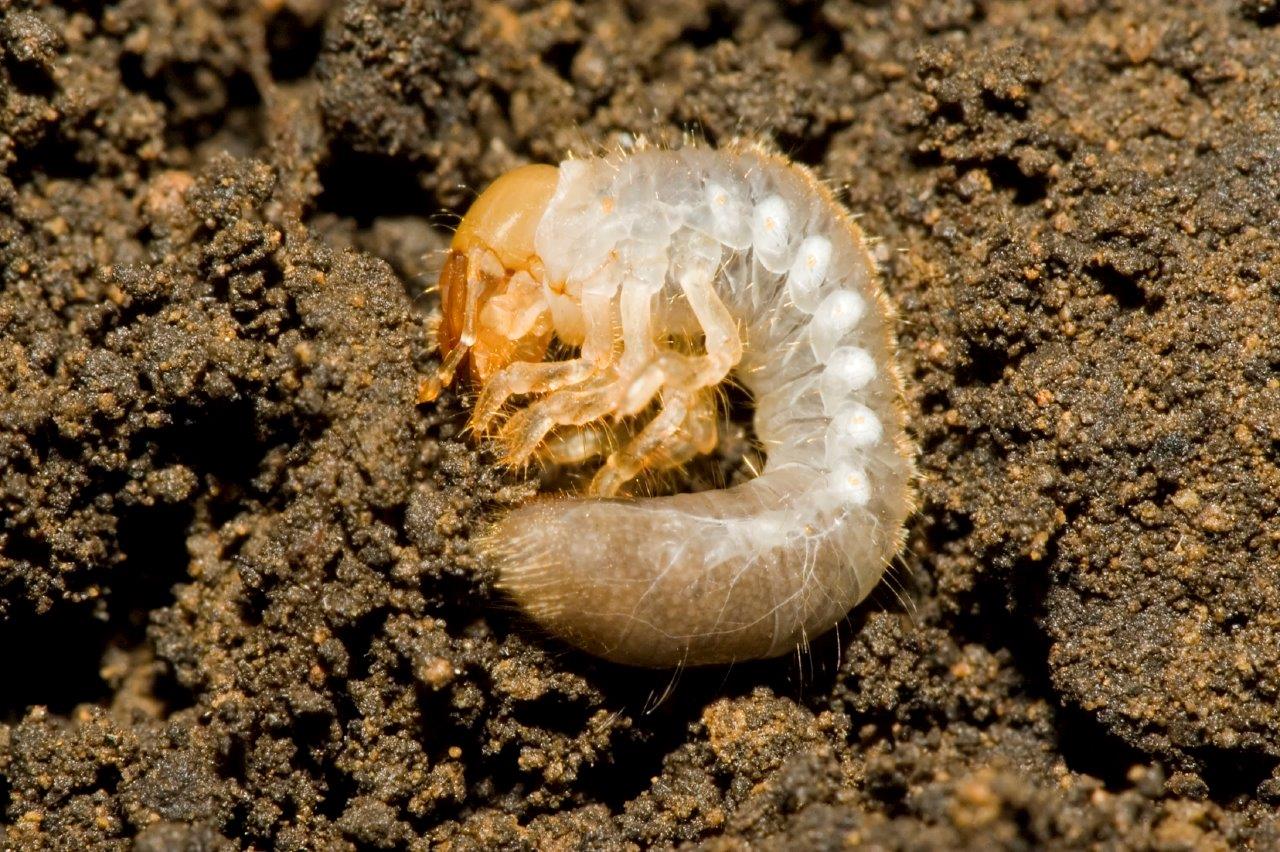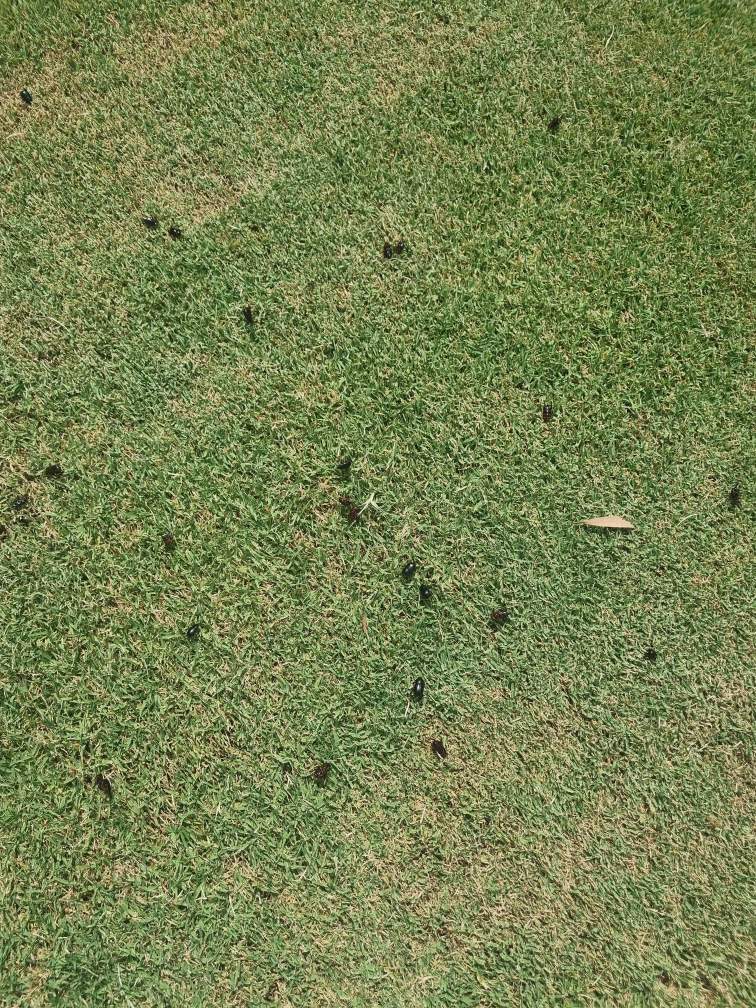How to identify and control black beetle damage in lawn
Author: Stefan Palm Date Posted: 20 February 2025
March is a time of year when you can do some preventative black beetle control that will pay big dividends later on in the year. By acting now, you can control adult black beetles, which have the potential to cause problems come Spring.
There is no doubt that African black beetles (Heteronychus arator) love the taste of lawns and need to be dealt with when their numbers get too high. While most people will have heard of black beetles and the damage they do to lawns, most won’t know a lot about them, how they breed, their lifecycle, etc., and I think that it’s important to have some understanding, especially when it comes to controlling them.
What is a Black Beetle, and how are they different from beetle larvae?
I’d say that every gardener has seen a black beetle or two in their lifetime, but to save any confusion, below is a photo of what an adult beetle looks like. There are many different types of beetles that you may see around the garden – this one is shiny black in colour and about 12-14mm long.
While adult black beetles can cause a significant amount of damage to various types of crops, by themselves, they are not much of a threat to the common types of lawn in South Australia, such as couch, kikuyu and buffalo, other than to lay beetle eggs in your lawn. These eggs hatch in Spring and cause damage to lawns, feeding on the root system as they develop from egg to larvae to adult. Newly hatched larvae are around 1-2mm long and grow to around 25-30mm long before they mature into adults. They kind of look like a witchetty grub. 
Lifecycle:
Understanding their lifecycle is key to controlling the problem. An adult black beetle is a flying insect and lives for around ten months. Black beetles overwinter in lawn grass before mating and laying eggs anytime during spring. During late spring and early summer, the overwintering generation of beetles dies. Meanwhile, the grubs or larvae that started life early in spring begin to emerge as lawn-foraging beetles. At this stage, it’s possible to have both adults and larvae feeding on your lawn and if the problem is ignored, dead lawn patches quickly appear.
A quick guide to lawn beetle attack
A beetle treatment is warranted if:
- You experienced serious damage (bare patches, loose turf (easy to pull)) from either lawn beetles or lawn grubs last season.
- You observe large numbers of black beetles in your lawn
- Large numbers of birds land on your lawn and appear to be feeding (on lawn grubs).
- You find large numbers of witchetty grub-like larvae in garden beds adjacent to your lawn
Tips for Black Beetle Treatment
Typically, the most effective time of year to treat black beetle-related problems in your lawn is early Spring. At that time of year, I'd recommend products that contain chlorantraniliprole, more commonly referred to as Acelepryn. Products include Yates Grub Kill and Protect and Acelepryn GR. Both contain the same active and do the same job, and that is to control the early stages of black beetle larvae. Since larvae do most of the damage to your lawn, this is ideal. The problem is that these products won't kill the adult beetle, which is where the opportunity lies right now. 
March is a great time to control black beetle adults that intend to overwinter in your lawn. In this way, you wipe out their population so that they don't lay eggs in the spring. I'd recommend Yates Bayrthroid as an excellent adult beetle killer. Both Bathroid and Acelepryn are less toxic than many of the other beetle and larvae treatments out there, but you will need both to do the job. This photo is of a customer who recently used Bathroid and flushed out hundreds of beetles across his lawn. Alternatively, you could use a product containing Bifenthrin, such as PCT 5-Star, which will control both adults and larvae (although it is not as effective against Larvae as Acelepryn). It isn't my preferred recommendation. However, it is more convenient.
Regular monitoring of your lawn will ensure that a major infestation doesn’t appear overnight. Well-cared-for lawns are more likely to resist and recover from beetle larvae attacks than neglected ones, so proper lawn maintenance is always a great first defence.
As always, if you have a problem that you can't seem to solve, give us a call on 8298 0555 or email at info@paulmunnsinstantlawn.com.au


